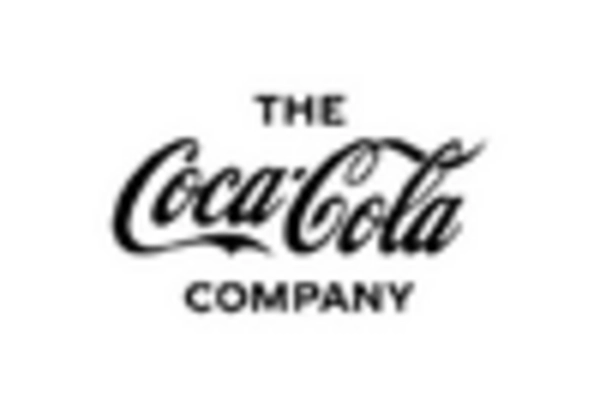Emergence of Private Label Brands
The consumer packaged-goods market is experiencing a rise in the popularity of private label brands, which are often perceived as cost-effective alternatives to national brands. Retailers are increasingly investing in their own brands, offering products that meet consumer needs at competitive prices. In 2025, private label products are expected to account for around 25% of total grocery sales in the US. This trend is indicative of changing consumer behavior, as shoppers seek value without compromising on quality. The emergence of private label brands is reshaping the competitive landscape of the consumer packaged-goods market, compelling national brands to innovate and enhance their offerings.
Rising Demand for Convenience Products
The market is experiencing a notable shift towards convenience-oriented products. As lifestyles become increasingly hectic, consumers are seeking ready-to-eat meals, snack options, and easy-to-use household items. This trend is reflected in the data, which indicates that convenience foods accounted for approximately 30% of total food sales in the US in 2025. The demand for on-the-go solutions is driving innovation in packaging and product development, as companies strive to meet consumer expectations for quick and accessible options. This driver is likely to continue influencing the consumer packaged-goods market, as manufacturers adapt to the evolving preferences of busy consumers.
Shift Towards Plant-Based Alternatives
The market is witnessing a significant shift towards plant-based alternatives, driven by changing dietary preferences and health consciousness. In 2025, plant-based products are projected to represent approximately 15% of total food sales in the US. This trend is fueled by an increasing number of consumers adopting vegetarian or flexitarian diets, as well as a heightened awareness of the environmental impact of meat consumption. Companies are responding by expanding their product lines to include plant-based options, thereby tapping into this growing segment. This driver is likely to continue influencing the consumer packaged-goods market as more consumers seek sustainable and health-oriented choices.
Increased Focus on Product Transparency
In the consumer packaged-goods market, there is a growing emphasis on product transparency and ingredient sourcing. Consumers are becoming more discerning, often seeking detailed information about the origins and nutritional content of the products they purchase. This shift is evidenced by a survey indicating that 70% of consumers in the US prefer brands that provide clear labeling and information about their products. As a result, companies are investing in transparent marketing strategies and reformulating products to meet these expectations. This driver is likely to shape the consumer packaged-goods market, as brands that prioritize transparency may gain a competitive edge.
Technological Advancements in Supply Chain Management
Technological innovations are reshaping the supply chain dynamics within the consumer packaged-goods market. The integration of advanced analytics, artificial intelligence, and automation is enhancing efficiency and reducing costs. For instance, companies are leveraging data analytics to optimize inventory management, which can lead to a reduction in waste and improved product availability. In 2025, it is estimated that 40% of companies in the consumer packaged-goods market have adopted some form of technology to streamline their operations. This trend not only improves profitability but also allows for quicker response times to changing consumer demands, thereby strengthening market competitiveness.

















Leave a Comment